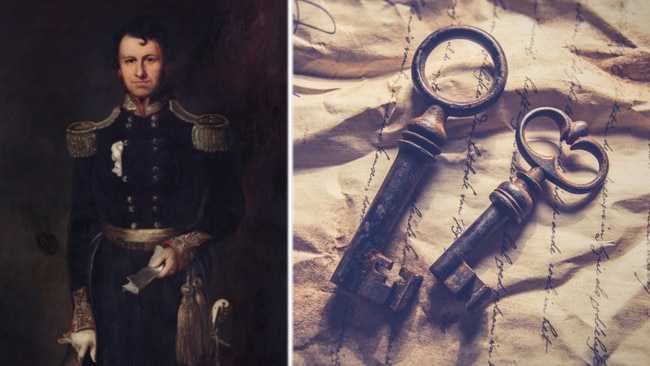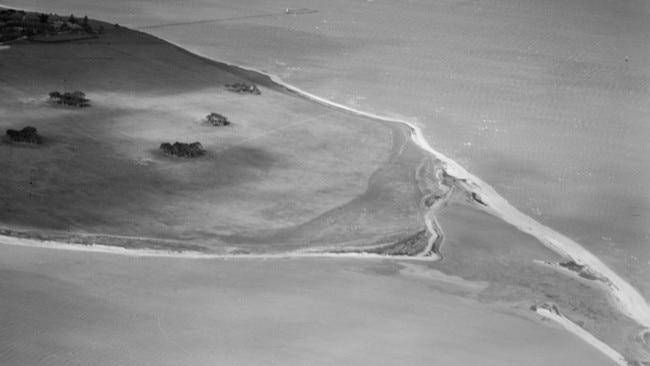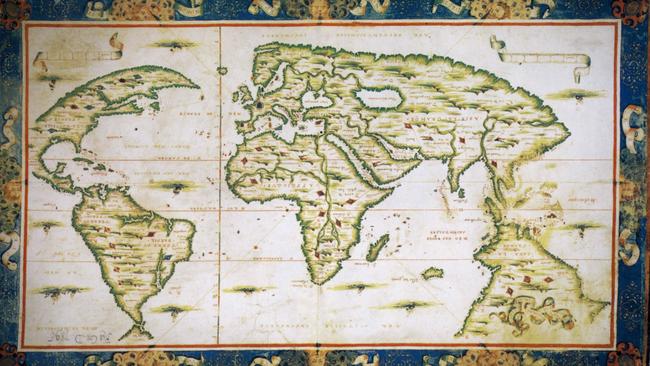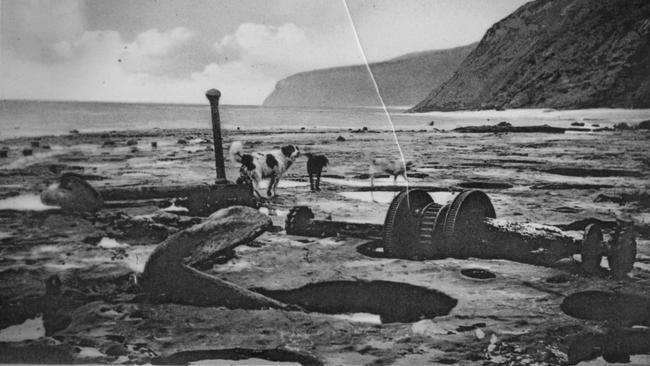The discovery of a set of keys has spawned theories on whether another European empire arrived in Victoria before the British
A set of keys found on a Victorian beach may have been dropped by explorers 70 years before Captain James Cook landed at Botany Bay.

Victoria
Don't miss out on the headlines from Victoria. Followed categories will be added to My News.
Matthew Flinders, the man who gave the continent of Australia and our beloved railway station their names, has long been regarded as one of the first Europeans to have crunched their boot on the land we call Victoria.
In 1802, on separate voyages, John Murray entered Port Phillip Bay and Flinders, during his famed circumnavigation of Australia, went ashore and climbed local peaks including the You Yangs.
But a little-known discovery of a lost set of keys on a Victorian beach four decades later could have turned Victorian history on its head.
Theories persist that the wayward European keys, documented by Charles La Trobe, might have been dropped by a Portuguese sailor who beat the British Empire to shore.

Keys in the kiln
La Trobe, who held the esteemed title of First Superintendent of Port Phillip, was inspecting a new kiln operation at Limeburners Point near Geelong in the mid 1840s when a worker showed him something remarkable.
Five metal keys, distinctly European, had been found in a layer of sand and shell that had been disturbed by the kiln.
An amateur archaeologist, La Trobe guessed that, by their appearance, the keys had been sitting in the sand for up to 150 years.
That would have meant the keys were dropped in that spot more than 70 years before the arrival of Captain James Cook at Botany Bay.

If genuine, the keys were proof that an empire other than the British, perhaps the Portuguese, had set foot in the area now known as Victoria long before Murray and Flinders’ voyages of 1802.
But La Trobe must have been a busy man.
It took almost three decades before the keys were brought to the public’s attention when he wrote about them in a letter to a Melbourne newspaper in 1874.
The sensational letter set off wild speculation about the origin of the keys, but the theories could never be properly tested.

By the time La Trobe told everyone about the astonishing find, the keys themselves had vanished.
Legend has it some were kept by La Trobe and given away to friends while some were kept by the kiln operator whose children were allowed to play with them, and lost them.
A later analysis on the estimated area of the keys’ discovery showed the surrounding soil layer was more than 2000 years old, making it all the more unlikely keys had been dropped there.
One theory was that the keys had been buried by a latecomer prospector as a means of detecting the presence of copper in the soil.
But the story of the keys is not the only strange tale about continental Europeans coming to Victoria long before the British.
In a 1977 book, historian Kenneth McIntyre argued the keys could have been dropped by Portuguese seamen, and linked them to another eerie Maritime mystery.
The phantom mahogany ship
Since the 19th Century stories have been told about a mysterious shipwreck in the area of Armstrong Bay near Port Fairy, said to be a dark-wooded Portuguese or Spanish caravel vessel.
McIntyre linked the stories of the wreck to a supposed secret southern voyage in 1522 by Portuguese explorer Cristóvão de Mendonça, during which the Geelong Keys might have been dropped.
Several major searches have been conducted for the so-called Mahogany Ship along the notorious Shipwreck Coast near Warrnambool, but it has never been found.
Still, theories about a Portuguese arrival on the Australian mainland before the British have persisted for decades.

Some scholars point to a set of French maps known as the Dieppe Maps, made in the 16th Century, as evidence the Portuguese were the first European arrivals.
The maps feature a rough landmass between Indonesia and the Southern Ocean, which is marked as ‘Java La Grande’.
Curiously, the place names are marked in Portuguese.
Although it doesn’t much resemble Australia, some have argued the geographical features match the east coast when rotated 90 degrees.
Other scholars have noticed similarities between Portuguese and Indigenous Australian words, perhaps pointing to early interaction between the cultures.
Ultimately the Geelong Keys and the Mahogany Ship remain shrouded in mystery.
One theory suggests knowledge of the wreck was purposefully hidden to avoid a dispute with the Portuguese, who might have claimed Victoria for themselves.
Could that also be the reason why Charles La Trobe kept quiet about the Geelong Keys for more than 20 years?
While the keys themselves are still missing, their secrets will remain unlocked.




